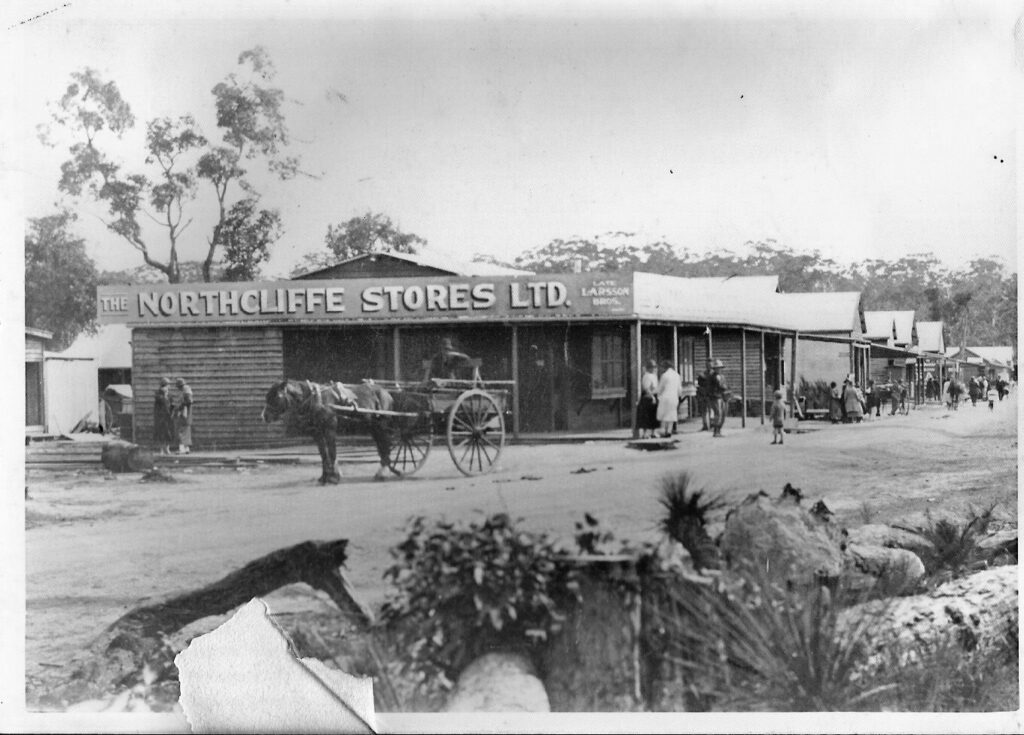Northcliffe’s centenary and WA’s group settlement scheme
Not much of the Bibbulmun Track goes through or in sight of open farmland but a bit that does is between Northcliffe and the Schafer campsite. A lot of the open country in that area owes its existence to the British migrants who opted to join WA’s group settlement scheme. The scheme was set up after the First World War and was, to a great extent, the idea of WA’s then premier, James Mitchell, or “Moo-cow Mitchell” as he was known because of his eagerness for WA to get its own dairy industry. Until the 1920s, WA imported a lot of its dairy products from the eastern states.
In hindsight, much of the group settlement scheme was based on wrong assumptions. Mitchell and others saw the rainfall and tall timber in WA’s southwest as evidence of an area with very productive soil. Before soil testing was possible, it was not known the land lacked trace elements essential to growing crops. The blocks surveyed in the forest to be future farms proved too small to be viable farms. To the scheme’s promoters, all that was needed to turn the forests into fertile arable fields and a land of milk if not honey was labour. Where to get it? WA was short of it.
After WWI the UK was in a depressed state with many unemployed. The British, Australian, and WA governments agreed to set up and fund a scheme under which suitable people, including many families, would be given an assisted passage to WA where, in groups of up to 20 families in some cases, they would be sent to areas in the southwest to clear the land and establish farms. Many of the areas were just jarrah or karri forest with no obvious evidence of humans having been there before except perhaps some survey marks. The “groupies”, as they came to be known, had to start from scratch with the few hand tools and basic building material supplied. A lot who came had no agricultural experience; some had seldom if ever used an axe. Until the farms were established the government would pay them for their labour and lend them money.
Northcliffe was established for group settlers and 2024 is its centenary. The area (others included Manjimup, Pemberton, Busselton to Augusta, Denmark to Walpole, Bridgetown and the Peel region) was chosen as one to which the settlers would be sent to start their new lives and fulfil their dreams of owning some land; something that for most would have been a pipedream in the UK. There were about 30 groups in the Northcliffe area. One author says the conditions for Northcliffe groupies were the toughest of all. The town’s museum is well worth a visit and has a lot in it about the area’s group settlers, including a house of a groupie family.
Some argue the groupies were conned and the scheme was a failure. The advertisements in the UK for the scheme painted far too rosy a picture. In 1925 a Royal Commission criticised it. The scheme lasted for only about nine years (1921 to about 1930) during which about 150 group settlements were started. In the finish the scheme proved very expensive for the three governments, and many groupies walked off with little or nothing. But for lots, especially the children, their time as groupies left deep but positive and proud memories. A few have published their memoirs. They are fascinating. Often they leave the reader reflecting on their own good luck and easy life.
Knowing something of the history of the surrounding landscape adds something to a walk on the Bibbulmun Track. The early timber industry and the group settlement scheme are two aspects of WA’s history that had a huge impact on the land over which the Track passes. As you walk between Northcliffe and Schafer, spare a thought for the groupies who lived in now unimaginably tough conditions and did manual work of a kind never done today to carve out a small patch of cleared land from the forest. If you think a long day carrying a heavy pack on the Track is hard work, think again.
Patrick Tremlett.
Find out more about the history of Northcliffe at the Pioneer Museum.

